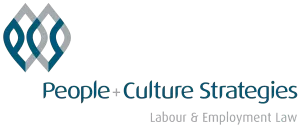"I don't know about that. I would actually rate that differently."
And so said one of the senior executive participants in a session I ran earlier in the week for the ExCo of one of Australia's largest publicly-listed companies. The comment was made as part of a "game" (or perhaps better described as an exercise) I have developed in response to the brief I had been given by this client. The brief was to take harassment prevention education to a new level of relevance.
This organisation, a household name, has done nearly all things that a diligent organisation could be expected to do when it comes to compliance in relation to behaviour and culture. I like the phrase "behaviour and culture" as a better descriptor for matters such as workplace bullying, discrimination and sexual harassment. The organisation has rolled out in-person training (conducted by me and members of my team) once every two years. Their policies are robust and routinely vetted by us. They have a sophisticated whistleblowing regime as well.
It is in this context that the brief to me when presenting to their Executive Committee was that I needed to find a way to make the lessons powerful and relevant. As with many organisations, in spite of their infrastructure for prevention, problems continue to occur and some problem areas have been glossed over, occasionally because of the "redeeming" qualities of a perpetrator.
In answer to the challenge, I developed a very simple exercise, which I referred to as an "alignment game". Rather than boring the group with details of relevant laws or even summaries of interesting cases, I wanted to push this group on the critical issue of defining what behaviours they consider to be unacceptable in their organisation. This group had already heard some of my pillars of education in this space such as the "spectrum".
After a very brief thought-provoking introduction by me, we played "How bad is this?". We worked through ten one sentence scenarios covering very practical issues that arise in any organisation (and certainly happen in theirs). Participants were asked to rate on a score of 1-10 how "bad" they thought that conduct was. Importantly, I did not want to give too much detail around any of the not-so-hypothetical scenarios as that would be a time-waster. I gave them enough to grapple with the concept. Naturally, the simplicity of the question disguises the complexity of what a person brings to their answer (their own values, their understanding of what their organisation stands for, societal norms etc).
Each participant then led the debate on a single scenario by explaining their views and then hearing the challenge from their colleagues. As always, having someone from outside your organisation facilitate and organise the discussion will generate more discussion than using an internal resource.
The Takeaway
Organisations have to be thinking "next level" in 2021 when it comes to compliance in these areas. As I said to the group in my introduction, those high-profile individuals who have allegedly engaged in sexual harassment are not unintelligent people. They have been educated and it is unlikely that they would not be able to articulate or define what constituted harassment or bullying.
Meaningful education does not require days or weeks of time or currency investment. This one hour session was probably the most powerful education these individuals have received in this area and entirely bespoke to their organisation.
